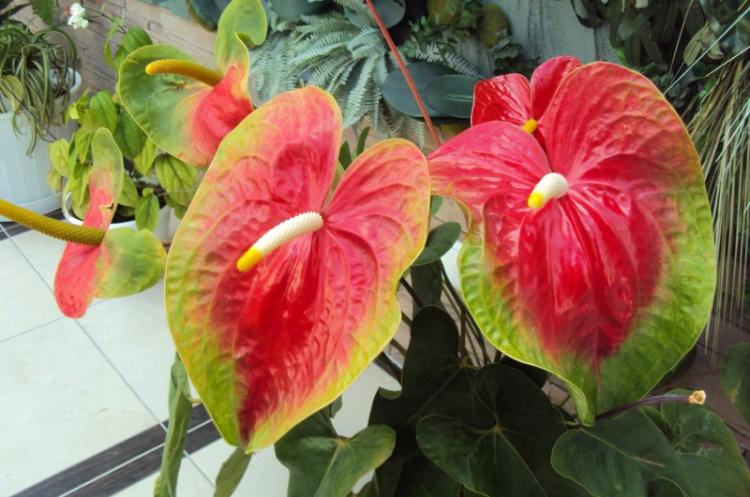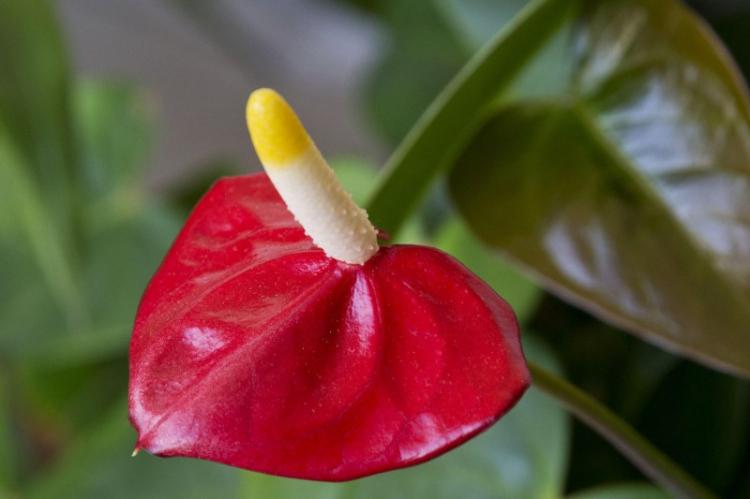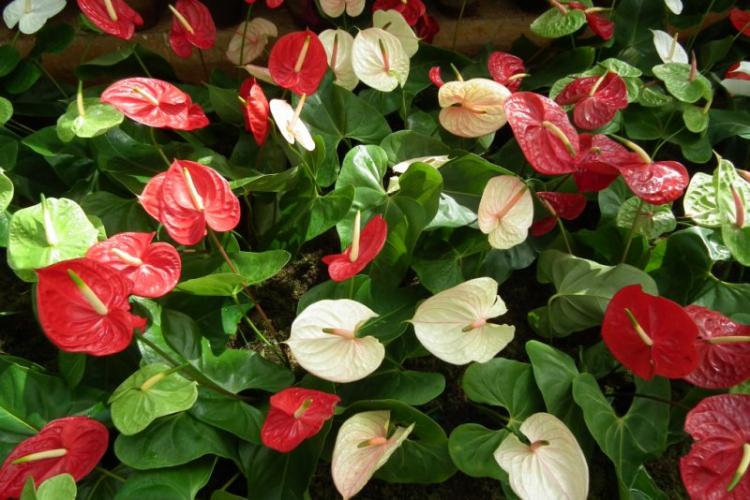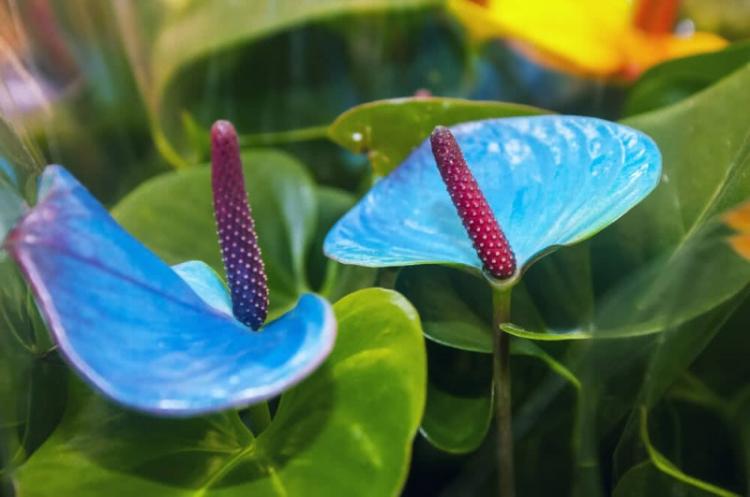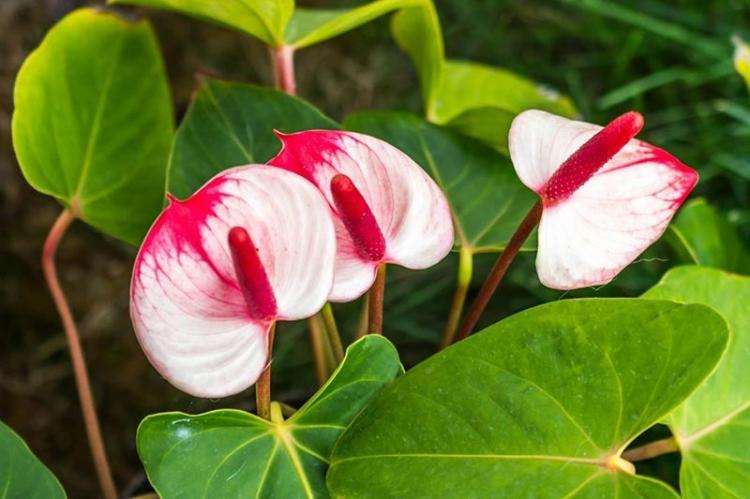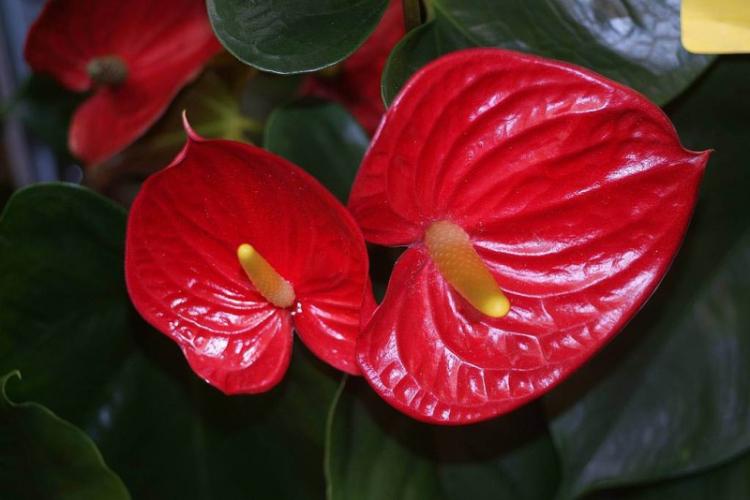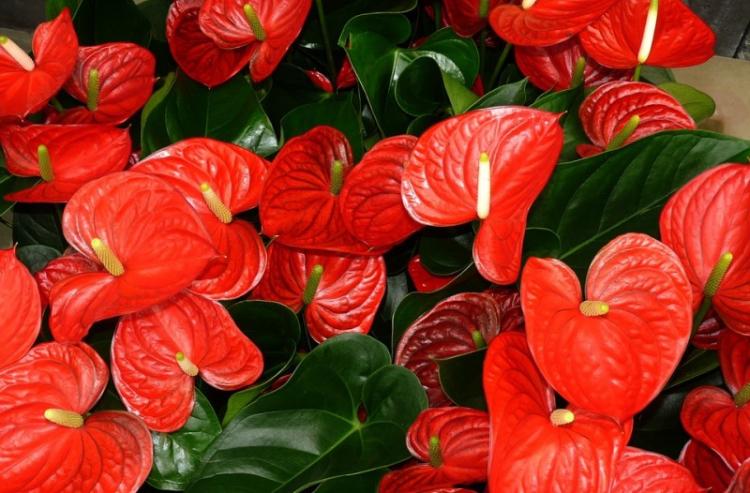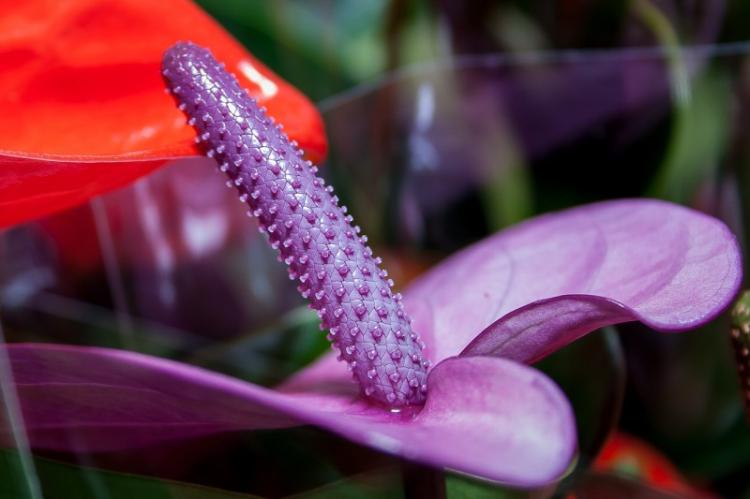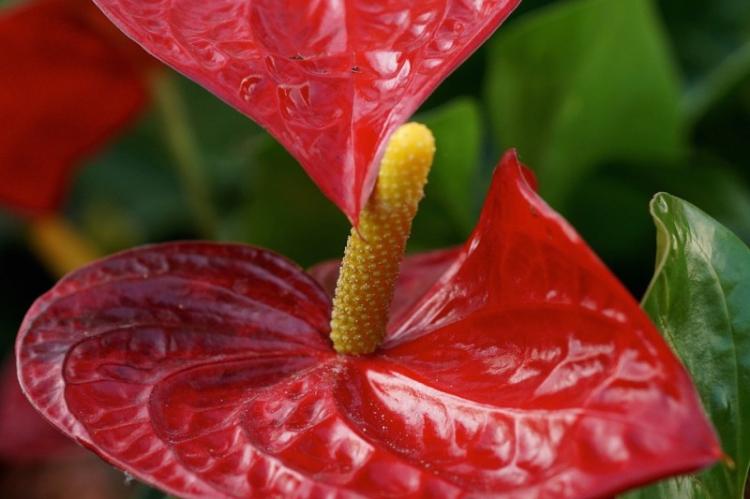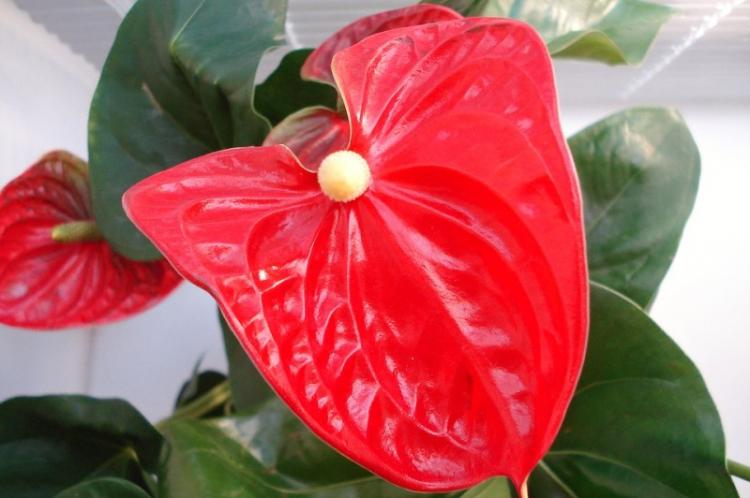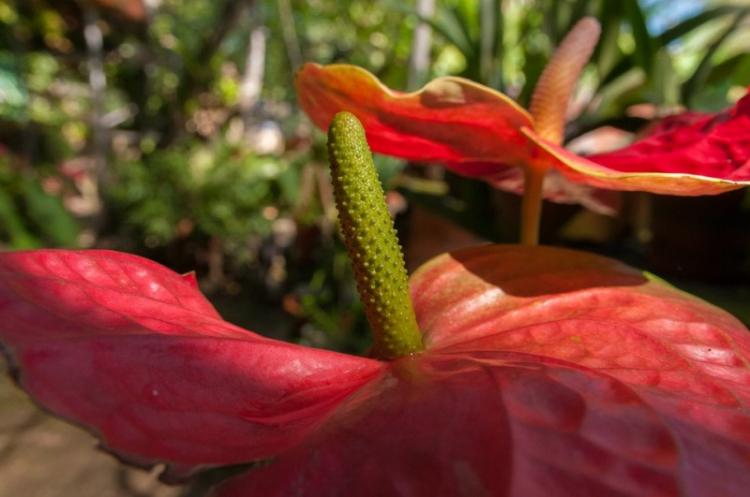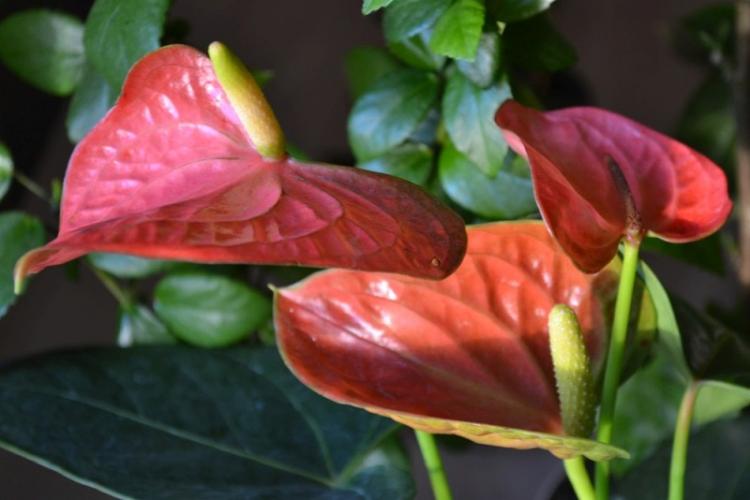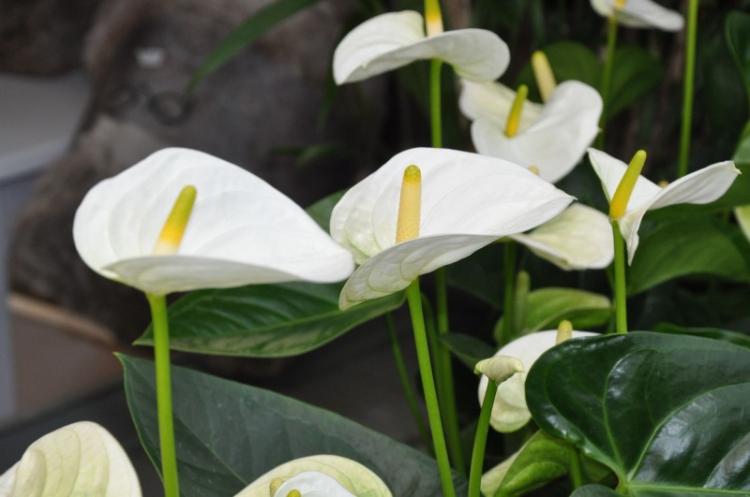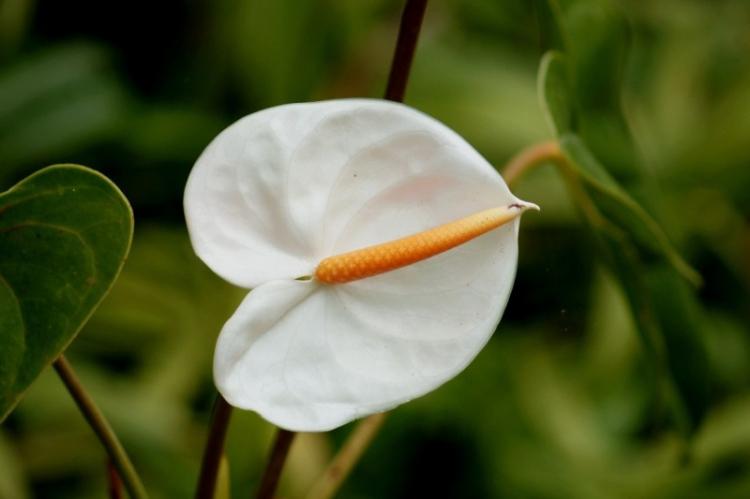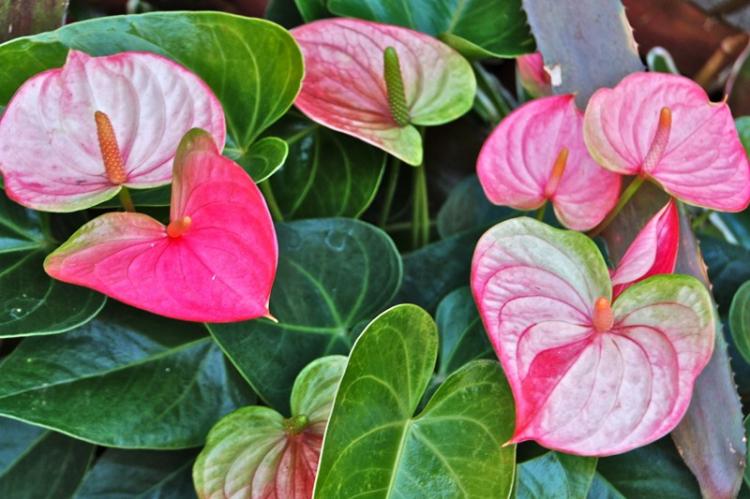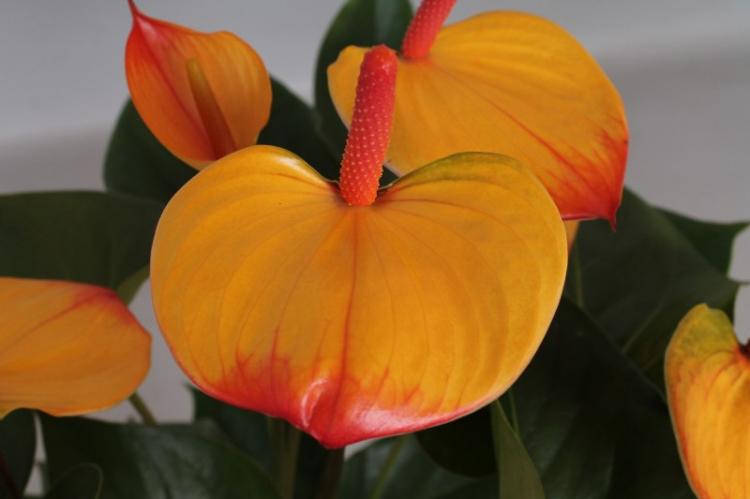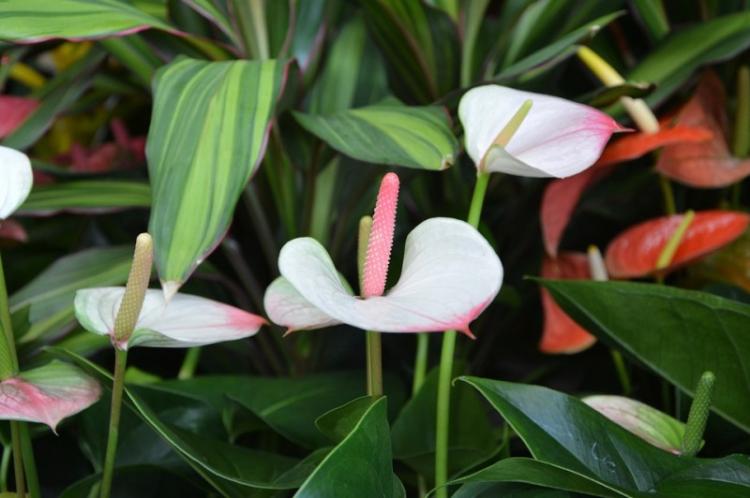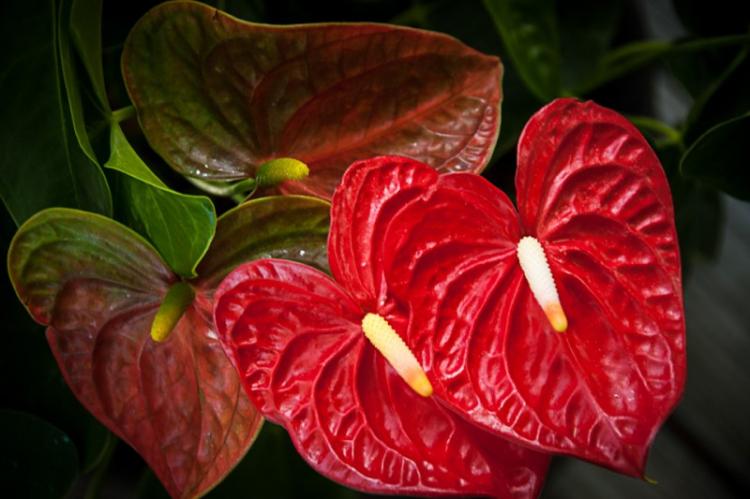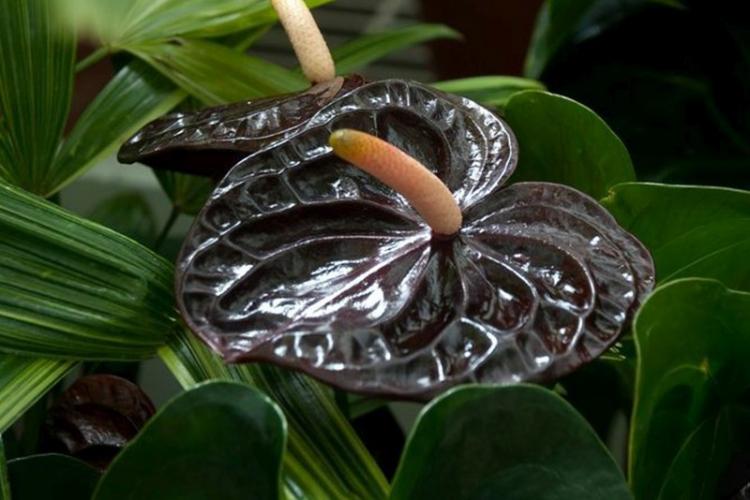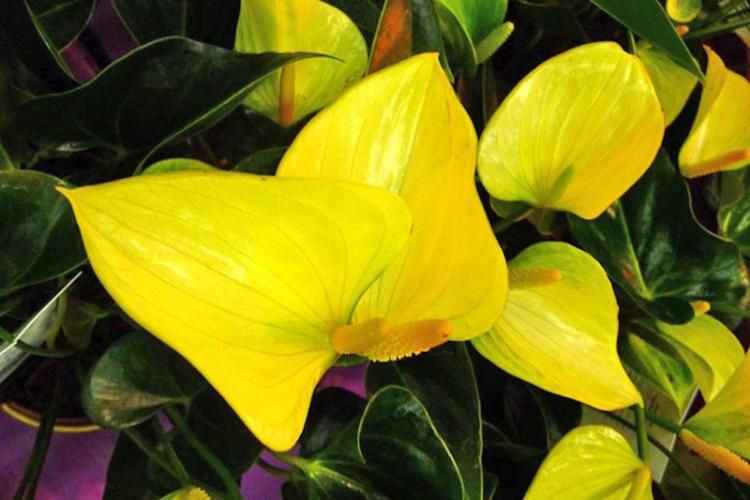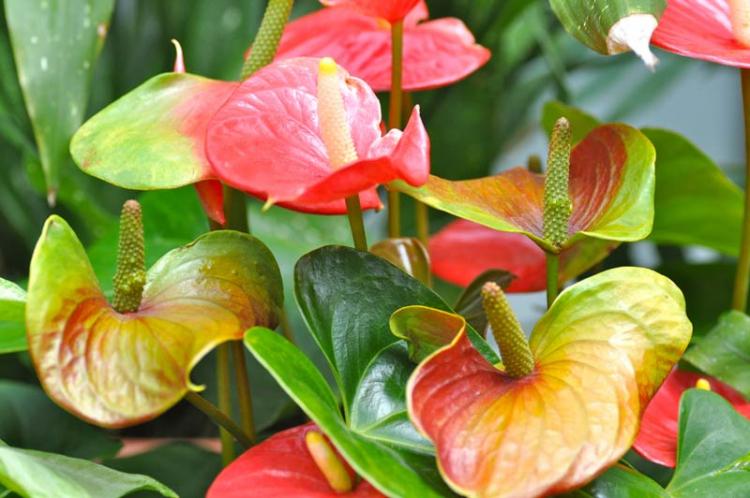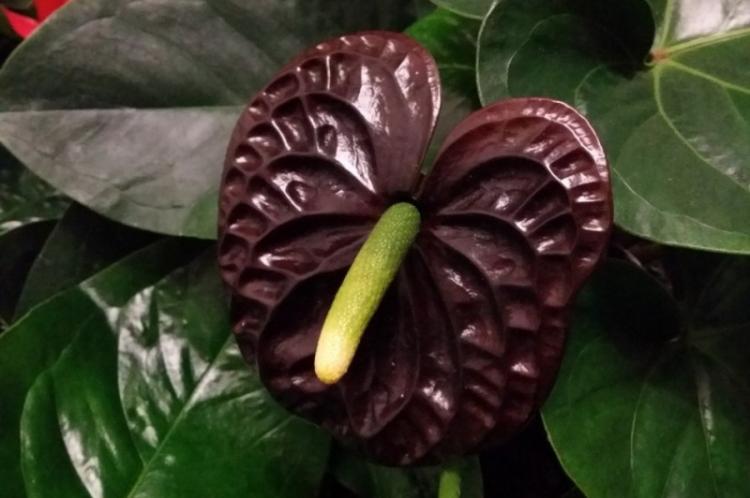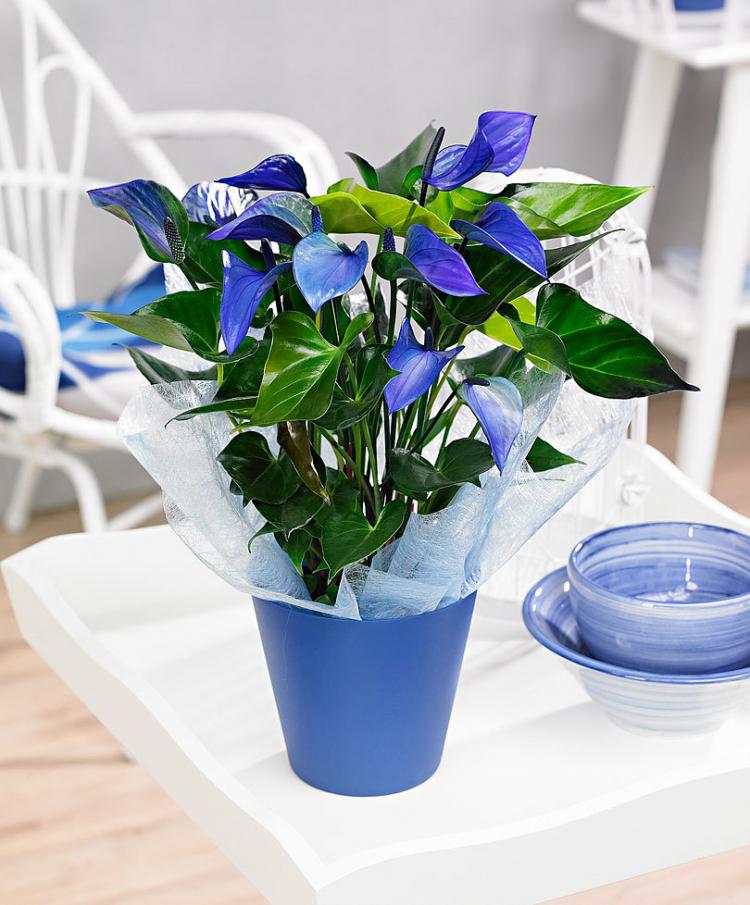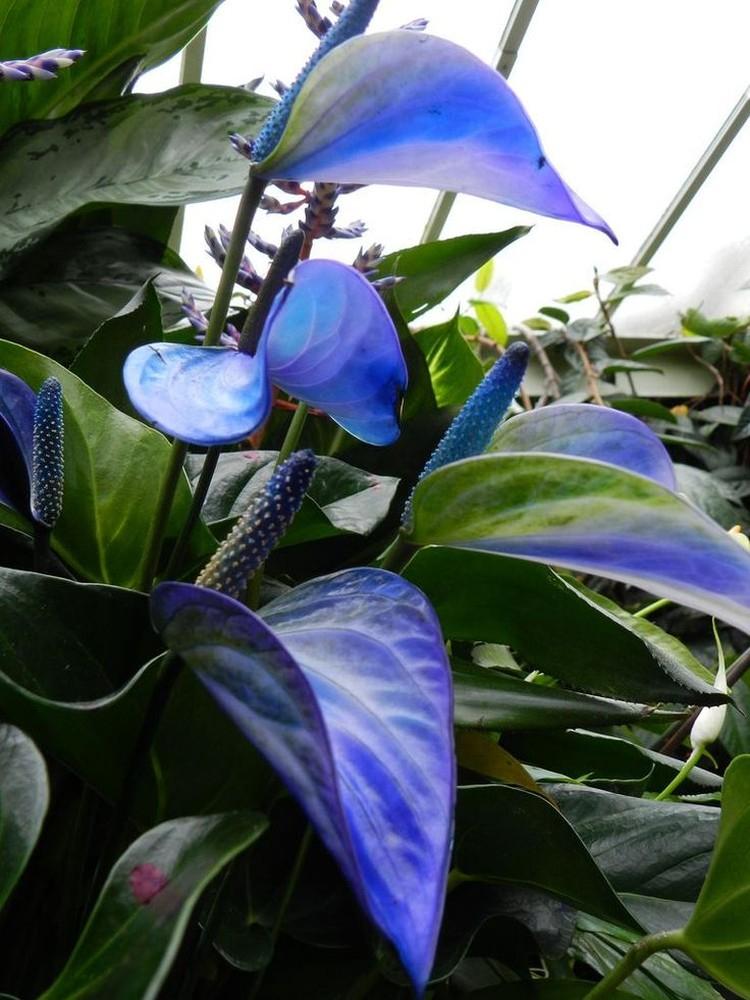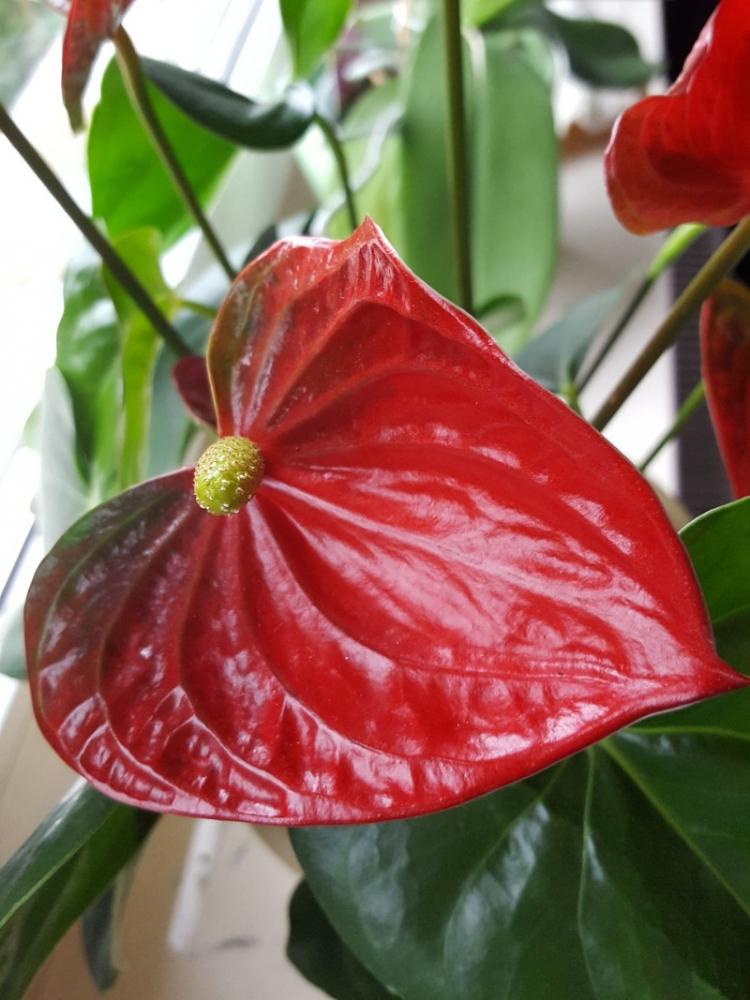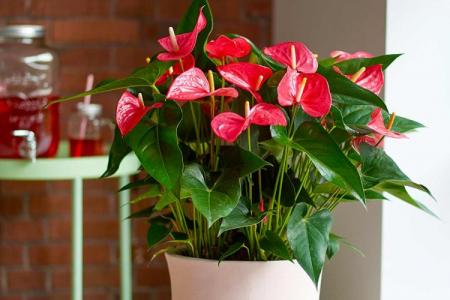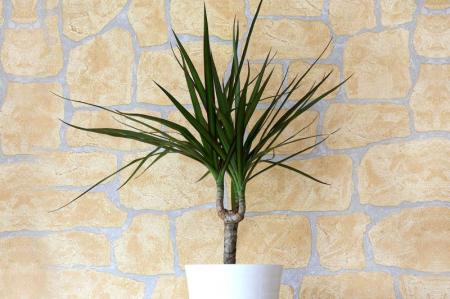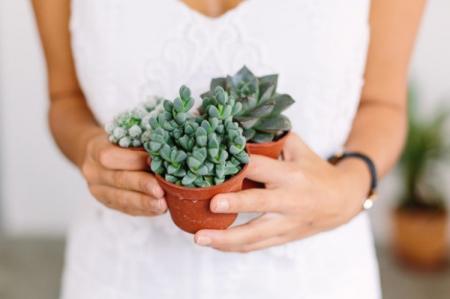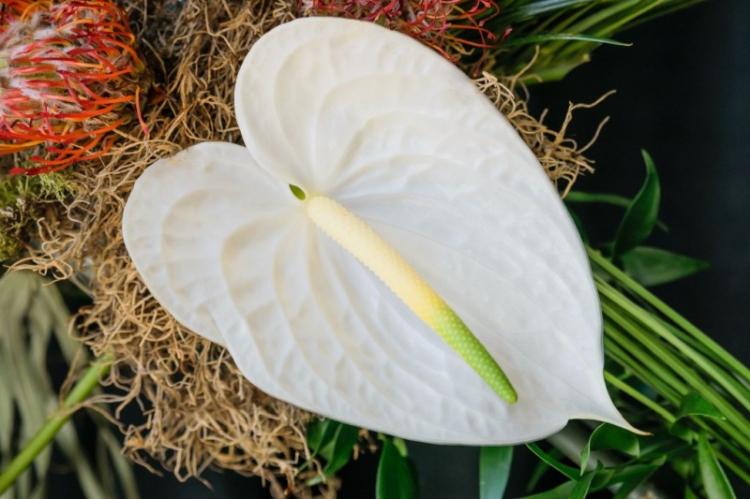
Are you looking for a faithful green friend who will delight you with beauty and rich colors during gray autumn and cold winter? All this is about anthurium! And even more, because with proper care, it can bloom almost all year round. And we will tell you what varieties are, what to look for and how to take care of a new acquisition!
general characteristics
Anthurium is a beautiful and unusual decorative flower, which many people know, if not by name, then thanks to its unusual colors. The genus of the same name has hundreds of species of lianas and herbaceous evergreens that came to us from the tropical jungle. There are even rare lithophytes that take root on stony and rocky rocks.
For the special shape of a large and bright bedspread in everyday life, the anthurium was nicknamed the flamingo flower. Leaves of different varieties are matte and glossy, rounded and heart-shaped, whole and dissected. In dense and humid rainforests, they turn towards the sun.
A bright and dense glossy blanket hides an inflorescence-ear, which is densely filled with small diamond-shaped flowers. Different varieties are remarkable for their aroma and large fruits that form after pollination.
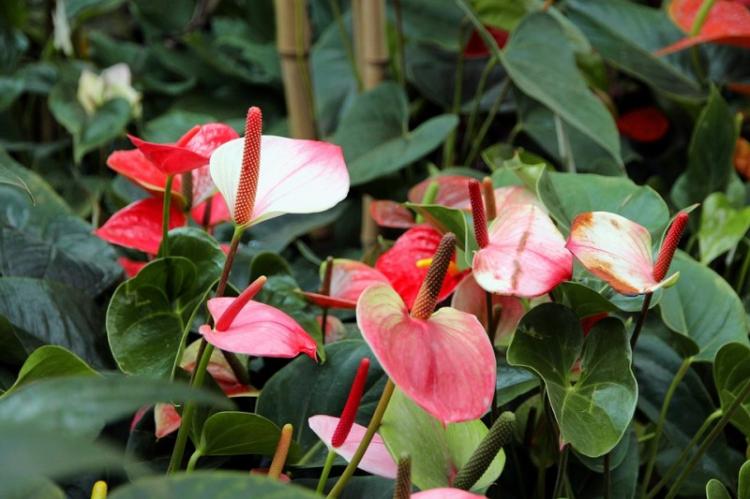
Types of anthurium
In the wild, anthurium is found in the tropical regions of South and Central America - there are more than 500 species of them. At home, adapted hybrids are most often grown, more adapted to our weather and seasonality.
Anthurium Andre
The most popular and widespread variety for landscaping apartments and houses sometimes grows to almost a meter. Andre belongs to those types of anthurium that bloom almost all year round.
Large white, pink, red or even dark burgundy bedspreads stretch towards the sun on long peduncles. The leathery, bumpy surface gleams in color, and against its background a tall and slightly curved pale ear rises.
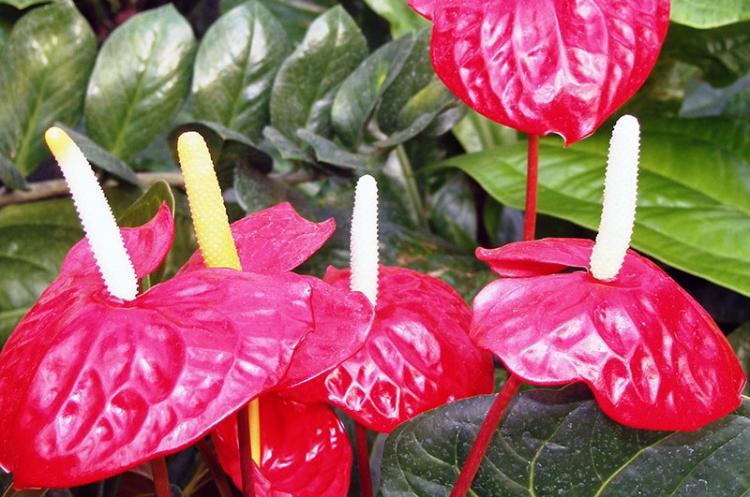
Anthurium Baker
Breeders have adapted the inhabitant of the dense leaves of Colombia and Guatemala to indoor conditions. The variety is notable for dense and very long leaves with brown blotches on the back. The pale beige-green blanket emphasizes the bright short flowers and the same juicy red fruits.
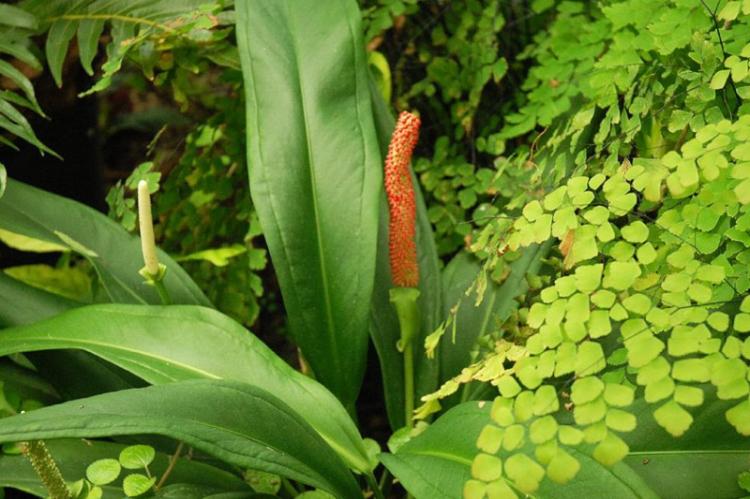
Black Queen or Black Prince
An unusual decorative variety is a green-leaved home anthurium with a glossy leathery black bedspread. First, a dark cherry bud forms, which gradually darkens over time. It looks even brighter against the background of rather dull leaves and with a bright contrasting ear.
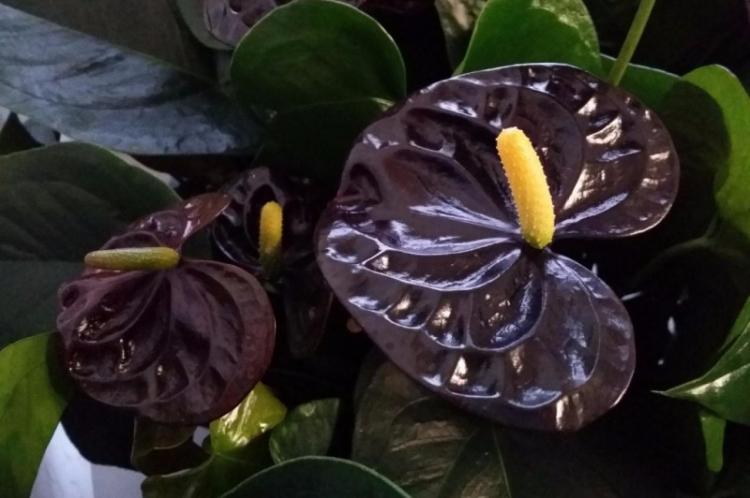
Scherzer's Anthurium
The peculiarity of this decorative variety is a more rounded shape of the flower, but its brightness and duration of flowering remain unchanged. A yellow or reddish ear is slightly twisted like a spiral and stretches up to 10 cm. The most common are white, orange, red and variegated bedspreads with splashes.
A characteristic feature of Scherzer's anthurium is a shortened stem and long peduncles, which are approximately twice as long as the petioles. The egg-shaped bedspread increases to 15 cm.
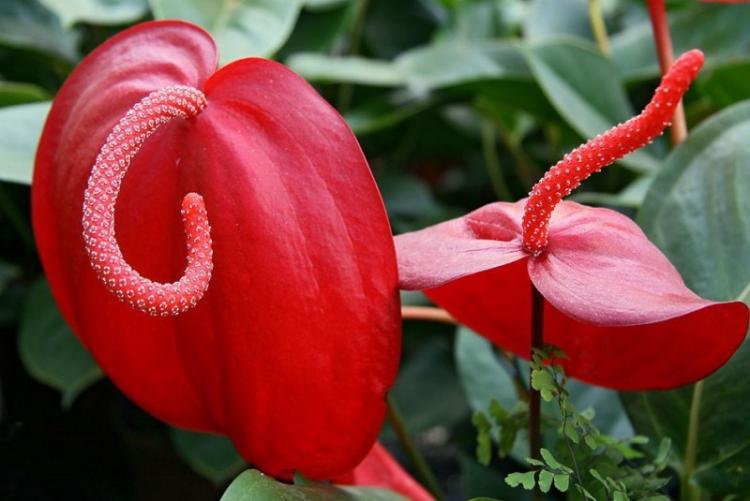
Anthurium Tulip
This is a relatively new ornamental variety, the popularity of which is rapidly growing due to its unusual tulip-shaped bedspreads. Particularly interesting is the Fiorino subspecies of a bright purple hue with the same purple ear.
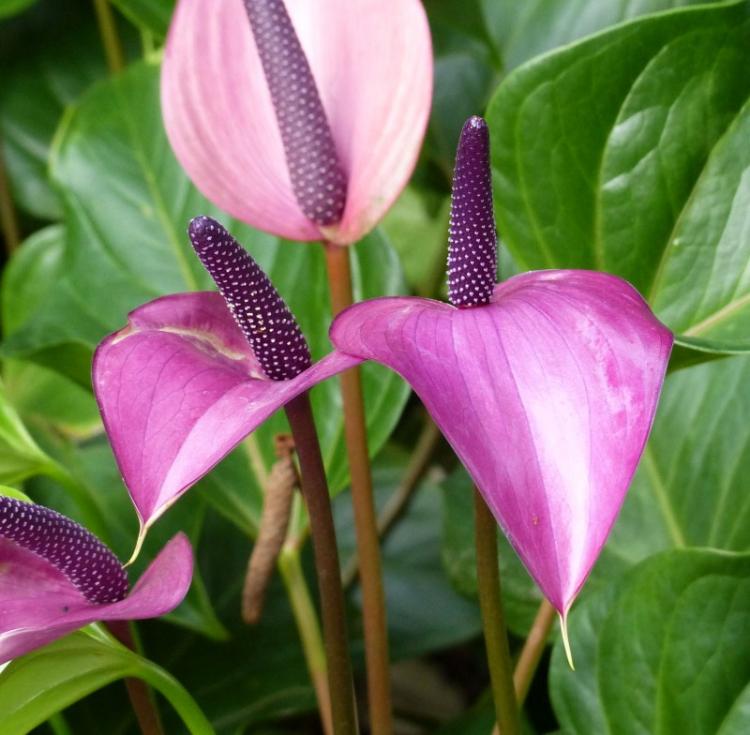
Hooker's Anthurium
The island variety is used to the monsoon winds and forests of the Antilles. Large leaves with small black dots are collected in voluminous earthy rosettes. The length of the peduncle reaches 80 cm, and a purple ear stands out against the background of a delicate pastel blanket.
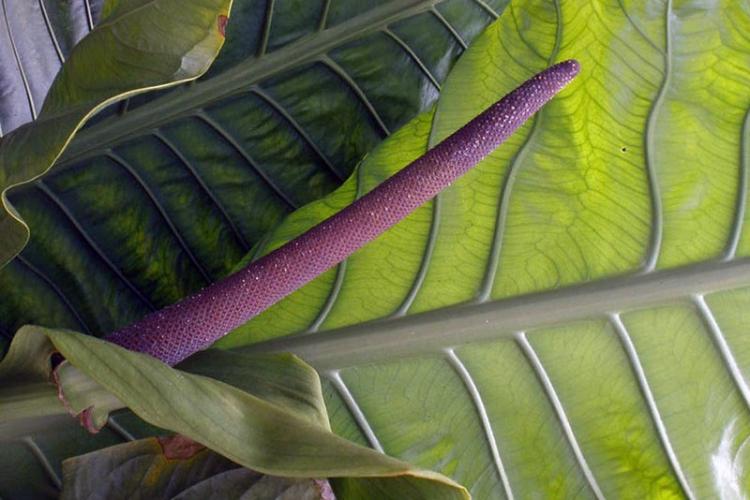
Princess Alexia
Another amazing variety that is notable for its bedspread, like the Black Queen. The breeders managed to bring out an unusual blue hue thanks to the introduction of pigments into the root system.When formed, the bud looks greenish, and over time it turns blue, but there are also several subspecies of bright yellow color.
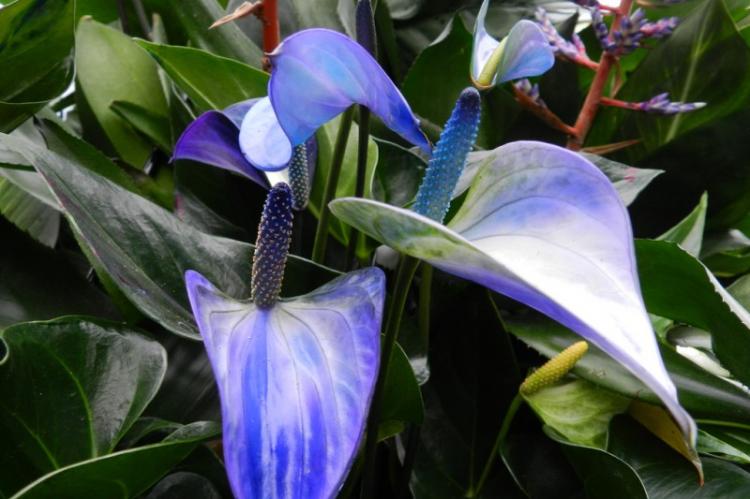
Anthurium multi-dissected
The refined liana with dissected segmented leaves belongs to the decorative deciduous varieties. One leaf consists of 5-9 segments and stretches up to 15 cm in length. The width of the “fingers” is up to 1.5 cm with a graceful wavy edge. But the flowers of the multi-dissected anthurium are not very remarkable.
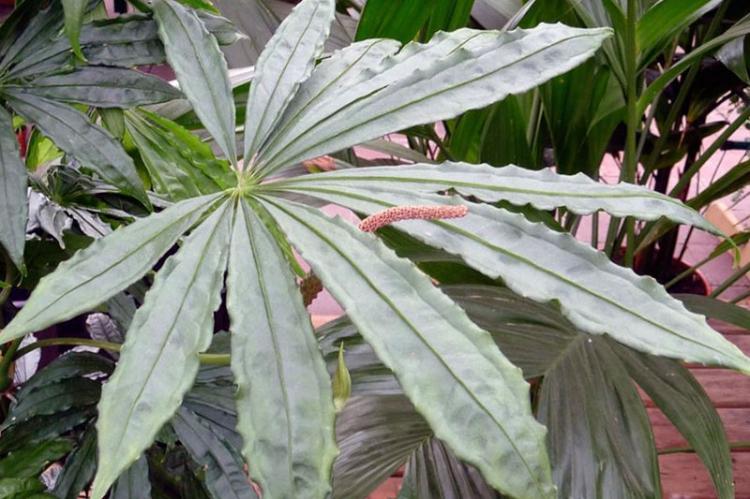
Anthurium clear-serrated
A medium-sized decorative variety is well suited for an apartment and does not take up as much space as its tall neighbors. Velvety leaves with clear, pronounced veins stretch up to 20 cm. An expressive feature is a strong aroma, but at the same time the veils of the clear-serrated anthurium are completely nondescript and unremarkable.
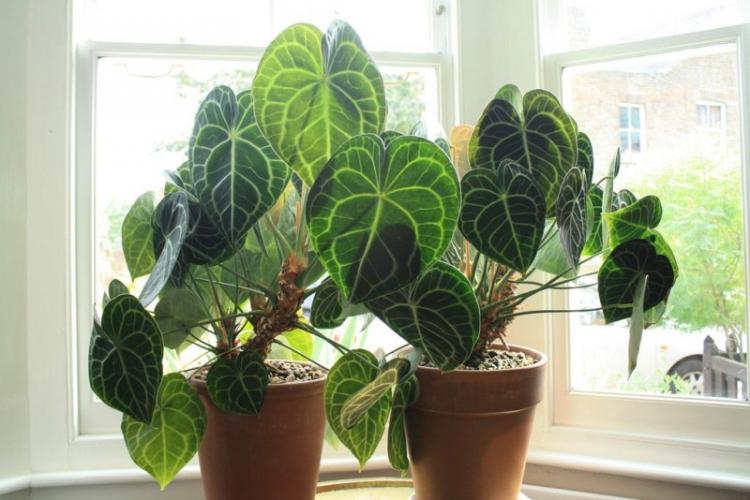
Crystal anthurium
Another deciduous decorative variety with large heart-shaped leaf plates of rich green color. The velvety surface is covered with wide silvery veins, which makes it resemble the texture of crystal glasses and vases. An unusual purple ear against the background of a 10-centimeter bedspread looks interesting.
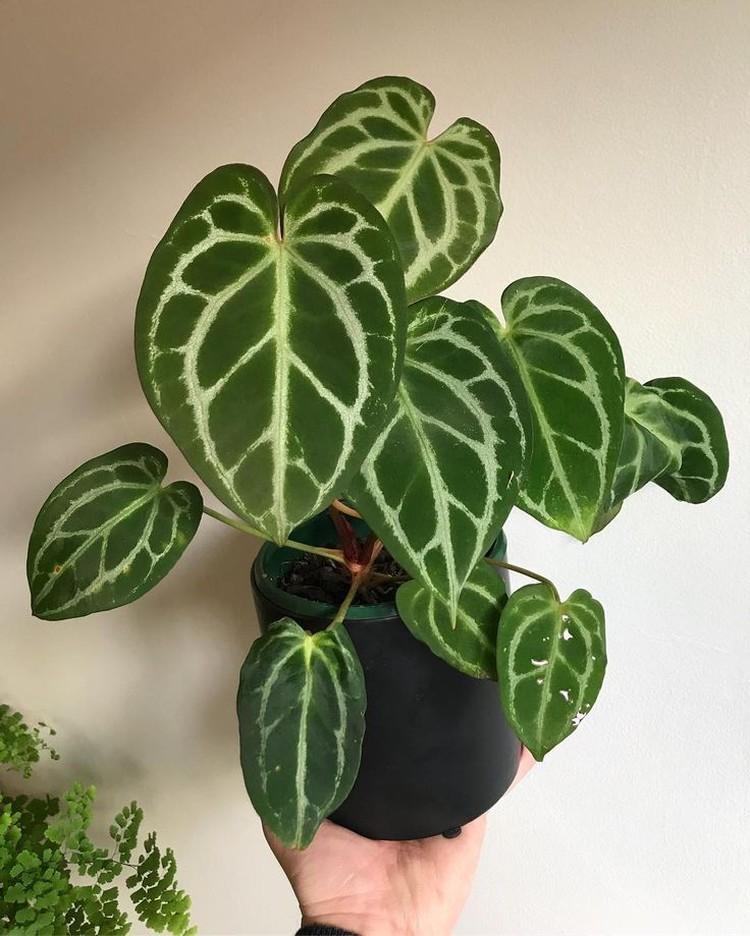
Anthurium is magnificent
This variety is very similar to crystal, but the leaves are of a darker emerald hue with a velvet sheen. The shape of the plates is more elongated, the edges can be curved and wavy, and the veins are white.
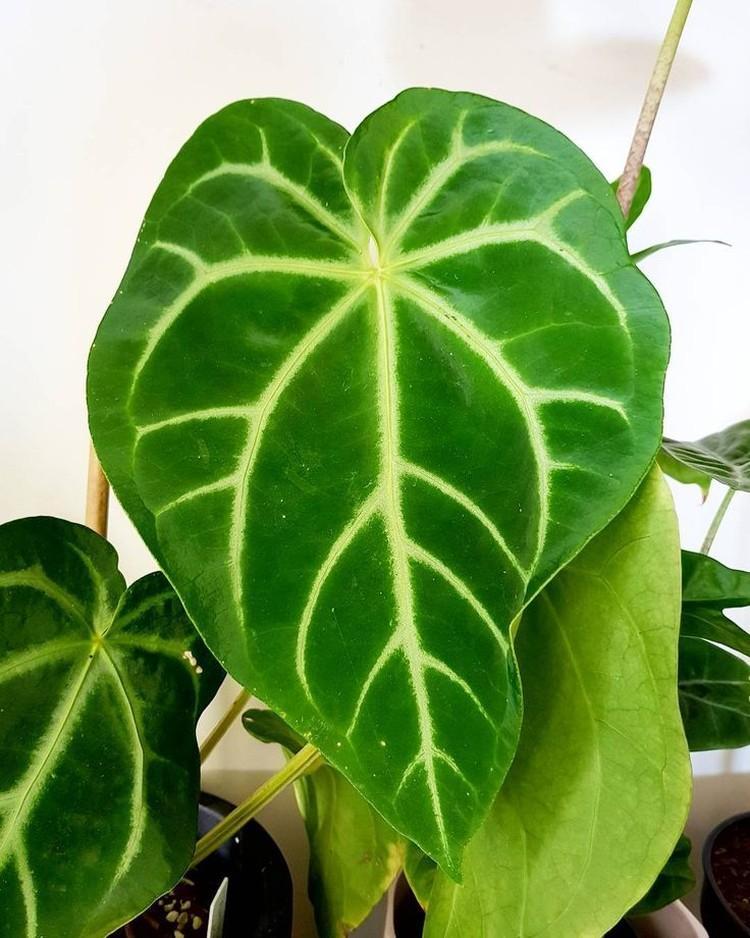
Anthurium care
Despite its exotic appearance, it is quite simple to care for anthurium. The biggest challenge is maintaining optimal moisture and watering conditions. For the rest, it is enough to protect the flower from cold and wind, provide it with access to light and a stable temperature.
Temperature
A tropical inhabitant adapts well to room conditions, but its ideal temperature is 20-25 degrees. In winter, make sure that the mark does not drop below 16 degrees. Do not leave the flowerpot in drafts or directly near heaters or radiators: any sudden changes can lead to its death.
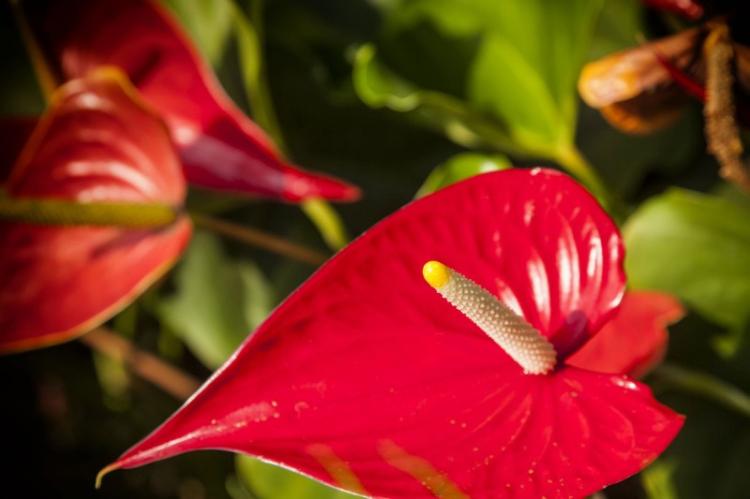
Lighting
Anthurium loves the sun and in its natural habitat unfolds after it during the day. At the same time, the flower does not tolerate direct rays, so make sure that the light is bright, but diffused. In the shade, anthurium grows much worse and does not bloom so intensely, and in winter it needs additional lighting.
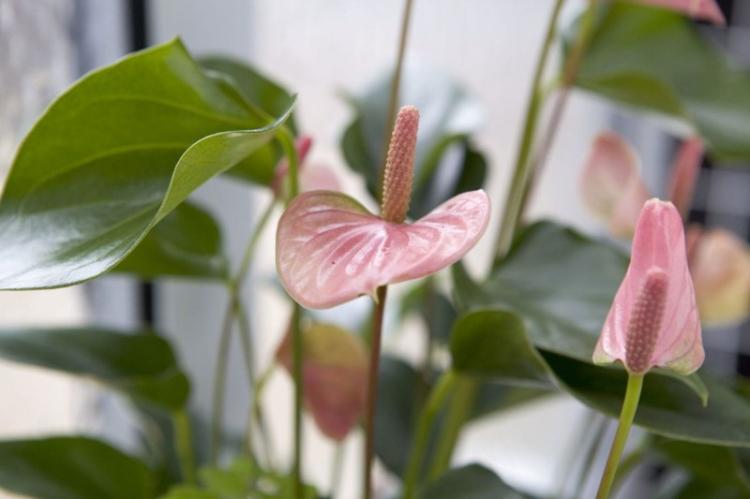
Watering
Consider that in the natural environment, anthurium is accustomed to an epiphytic or semi-epiphytic lifestyle. It does not need heavy nutrient soil and is buried by its roots not in the ground, but in the top layer of fallen leaves, branches and dry grass.
The substrate is very loose and unstable, so it does not retain water and the rhizome is constantly breathing. The denser the soil and the more abundantly you water it, the more difficult it is for the anthurium to adapt to such conditions, and this leads to the development of rot.
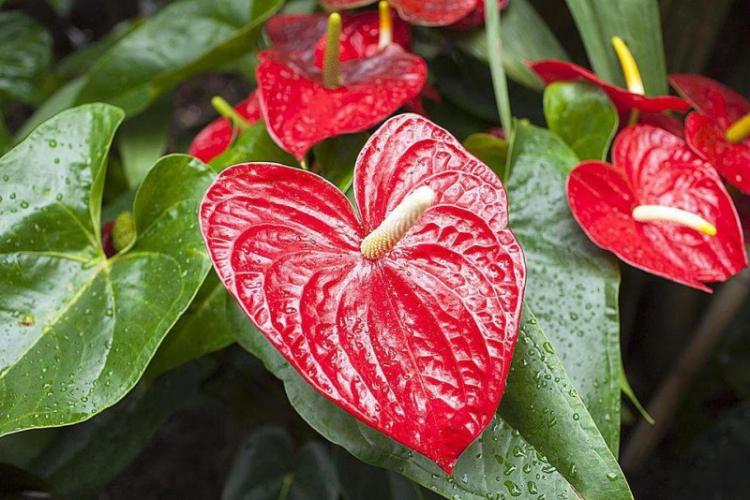
How badly it tolerates excessive watering, just as much it loves high humidity. It's best to buy a special humidifier, but if you don't have one, try to get by with wide trays of water placed around or under the pots. The main thing is that the water does not seep into the flowerpot itself.
Any other nearby water source or even damp towels will do. But one spraying is not enough, otherwise you will have to repeat the procedure every few hours. In addition, with intensive spraying, there is a high risk of flooding the soil again.
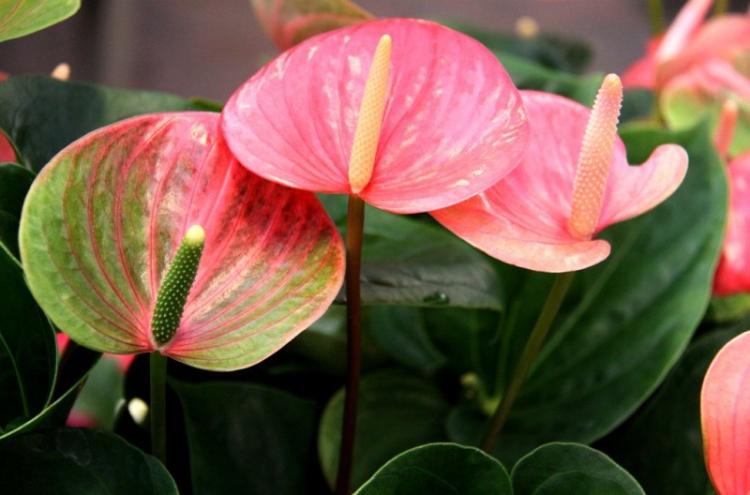
Fertilizers and feeding
A beautiful, large anthurium needs feeding during active growth and development: in spring and summer. Can use complex formulations for aroid or orchids twice a month.
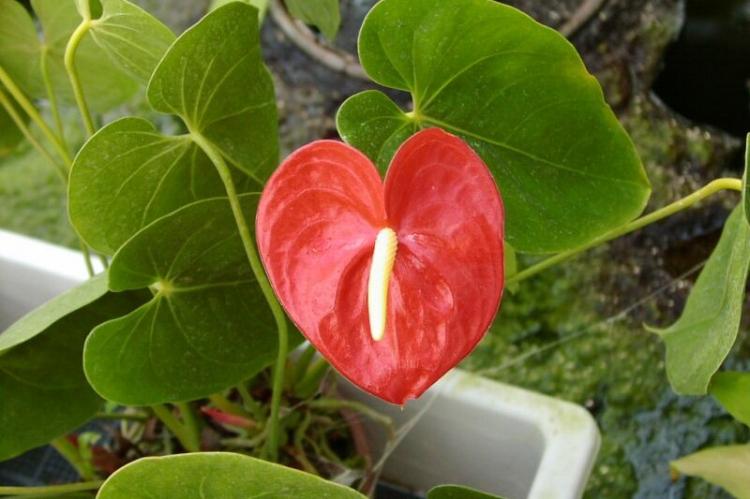
Pruning
Pruning anthurium is not necessary, but periodically the plant needs to be rejuvenated. During growth, the lower leaves gradually fall off, and new ones grow only from above. The flower becomes unkempt and ugly, so it is better to cut and root the top.
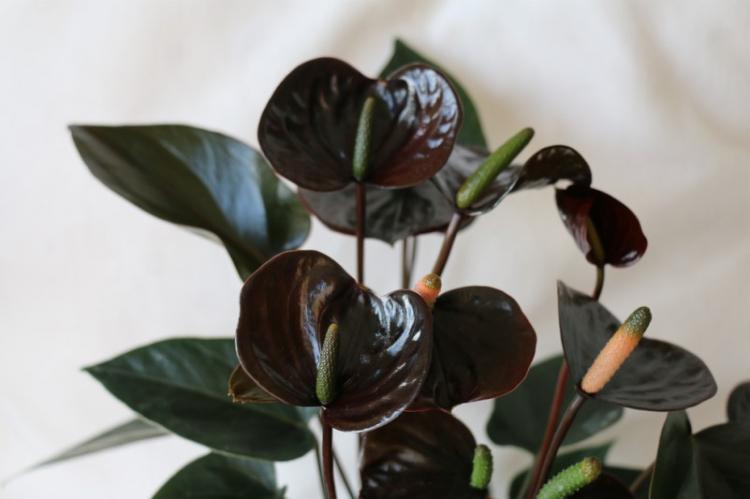
Planting and reproduction of anthurium
Anthurium propagates well by cuttings: for this, pinch off the upper part of the stem with at least one leaf and aerial roots. It will harden and take root very quickly - and you can plant the sprouts.
Seeds are used less often because it is more difficult to germinate them at home: flowers need to be manually pollinated for several days and wait for the fruits to ripen, which sometimes takes up to a year. Seeds that are too old cannot be used - they simply will not sprout. And new young seedlings are placed for several weeks in a small greenhouse before picking and seedling.
Transplant the anthurium every 1-2 years as the root system grows. At the same time, you can divide the mother plant into several stems with roots and plant them in different pots. Just handle the plant carefully: its juice is poisonous and can cause irritation.
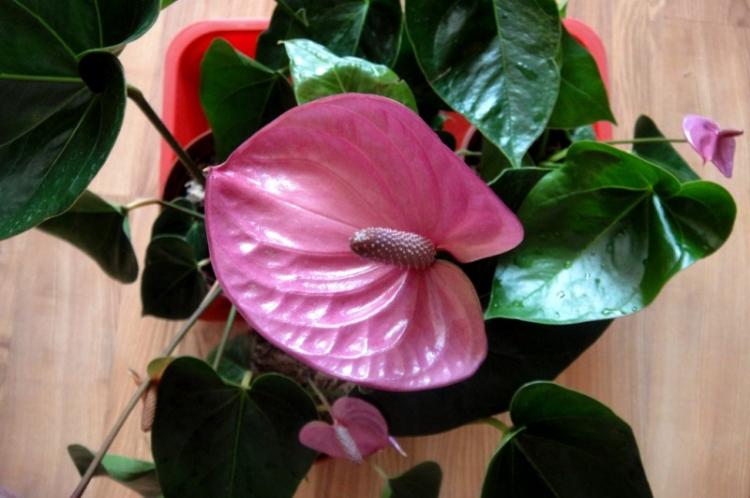
Pest and disease control
Anthurium is remarkable precisely for its leaves and flowers, so the main problem is the appearance of all kinds of spots. Most often, they indicate inappropriate soil or over-watering. First, lower the soil moisture level and control it with a stick or even your finger.
If this does not help or there are too many stains, you will have to use special chemicals. Complex systemic fungicides that destroy fungus and bacterial infections are best manifested. And if the ground is too wet, you will have to get a flower with a rhizome, dry it and transplant it.
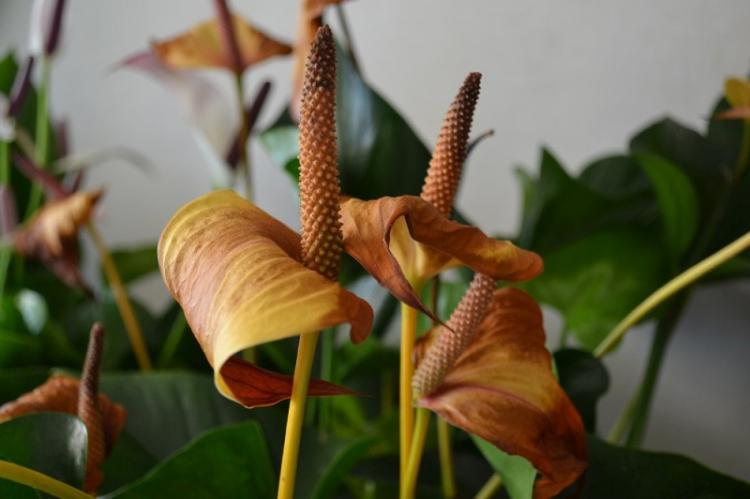
Anthurium suffers from drafts and hypothermia - sometimes it is enough to forget to close the window at night. The first symptoms - the leaves become brown at the stalk and gradually darken completely. The flower tolerates a temperature of 12-15 degrees only with absolutely dry soil.
Of parasites and pests, cyclamen and spider mites are most often hidden behind juicy leaves. They are difficult to detect before the onset of obvious symptoms: new leaves grow weak and pale, and old ones become covered with spots and small punctures. First rinse the leaves by hand, and then use special preparations.
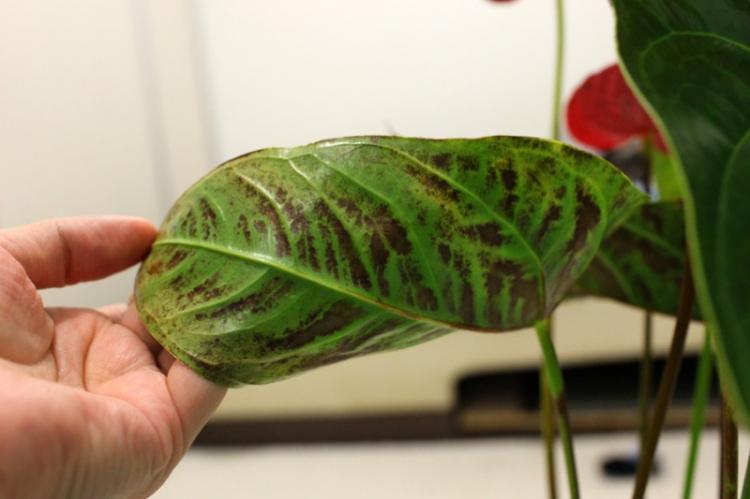
Anthurium - photo
Anthurium is prized for its uniqueness: a special shape of flowers, long flowering and beautiful leaves. Just take a look at these pictures - it's hard to find something similar!
